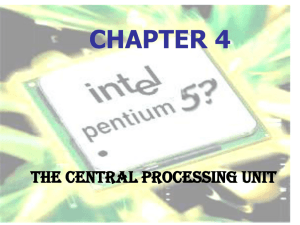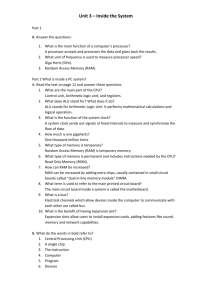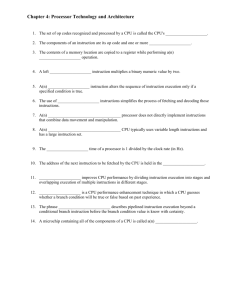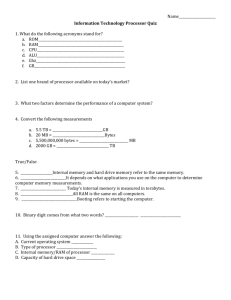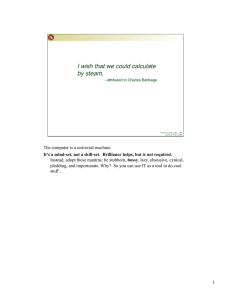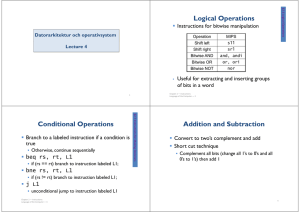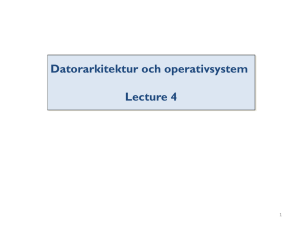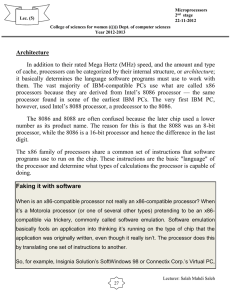The central processing unit(CPU).
advertisement
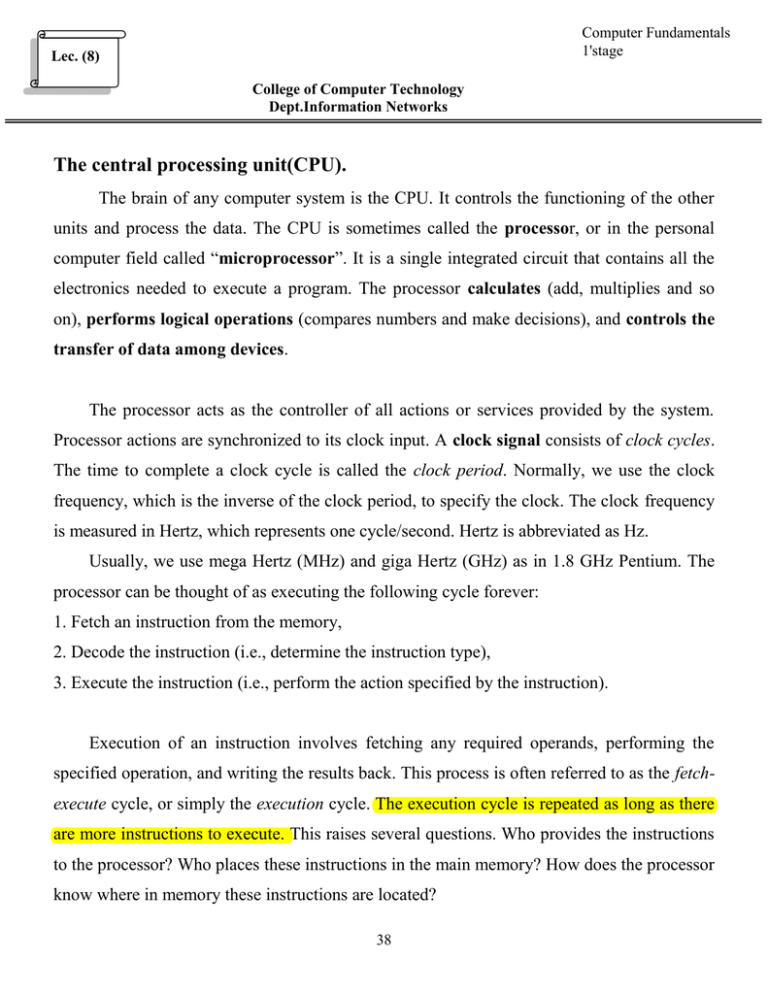
Computer Fundamentals 1'stage Lec. (8) College of Computer Technology Dept.Information Networks The central processing unit(CPU). The brain of any computer system is the CPU. It controls the functioning of the other units and process the data. The CPU is sometimes called the processor, or in the personal computer field called “microprocessor”. It is a single integrated circuit that contains all the electronics needed to execute a program. The processor calculates (add, multiplies and so on), performs logical operations (compares numbers and make decisions), and controls the transfer of data among devices. The processor acts as the controller of all actions or services provided by the system. Processor actions are synchronized to its clock input. A clock signal consists of clock cycles. The time to complete a clock cycle is called the clock period. Normally, we use the clock frequency, which is the inverse of the clock period, to specify the clock. The clock frequency is measured in Hertz, which represents one cycle/second. Hertz is abbreviated as Hz. Usually, we use mega Hertz (MHz) and giga Hertz (GHz) as in 1.8 GHz Pentium. The processor can be thought of as executing the following cycle forever: 1. Fetch an instruction from the memory, 2. Decode the instruction (i.e., determine the instruction type), 3. Execute the instruction (i.e., perform the action specified by the instruction). Execution of an instruction involves fetching any required operands, performing the specified operation, and writing the results back. This process is often referred to as the fetchexecute cycle, or simply the execution cycle. The execution cycle is repeated as long as there are more instructions to execute. This raises several questions. Who provides the instructions to the processor? Who places these instructions in the main memory? How does the processor know where in memory these instructions are located? 38 When we write programs—whether in a high-level language or in an assembly language— we provide a sequence of instructions to perform a particular task (i.e., solve a problem). A compiler or assembler will eventually translate these instructions to an equivalent sequence of machine language instructions that the processor understands. The operating system, which provides instructions to the processor whenever a user program is not executing, loads the user program into the main memory. The operating system then indicates the location of the user program to the processor and instructs it to execute the program. The actions of the CPU during an execution cycle are defined by micro-orders issued by the control unit. These micro-orders are individual control signals sent over dedicated control lines. For example, let us assume that we want to execute an instruction that moves the contents of register X to register Y. Let us also assume that both registers are connected to the data bus, D. The control unit will issue a control signal to tell register X to place its contents on the data bus D. After some delay, another control signal will be sent to tell register Y to read from data bus D. The components of CPU. A typical CPU has three major components: (1) register set, (2) arithmetic logic unit (ALU), and (3) control unit (CU). The register set differs from one computer architecture to another. It is usually a combination of general-purpose and special purpose registers. General-purpose registers are used for any purpose, hence the name general purpose. Specialpurpose registers have specific functions within the CPU. For example, the program counter (PC) is a special-purpose register that is used to hold the address of the instruction to be executed next. Another example of special-purpose registers is the instruction register (IR), which is used to hold the instruction that is currently executed. Figure 12 shows the main components of the CPU and its interactions with the memory system and the input/output devices. 39 Memory System Data Instructions Input / Output Figure 12: Central processing unit main components and interactions with the memory and I/O. The ALU provides the circuitry needed to perform the arithmetic, logical and shift operations demanded of the instruction set. The control unit is the entity responsible for fetching the instruction to be executed from the main memory and decoding and then executing it. The CPU can be divided into a data section and a control section. The data section, which is also called the datapath, contains the registers (known as the register file) and the ALU. The datapath is capable of performing certain operations on data items. The register file can be thought of as a small, fast memory, separate from the system memory, which is used for temporary storage during computation. 40 The control section is basically the control unit, which issues control signals to the datapath. The control unit of a computer is responsible for executing the program instructions, which are stored in the main memory. It can be thought of as a form of a “computer within a computer” in the sense that it makes decisions as to how the rest of the machine behaves. Like the system memory, each register in the register file is assigned an address in sequence starting from zero. These register “addresses” are much smaller than main memory addresses: a register file containing 32 registers would have only a 5-bit address, for example. The major differences between the register file and the system memory is that the register file is contained within the CPU, and is therefore much faster. An instruction that operates on data from the register file can often run ten times faster than the same instruction that operates on data in memory. For this reason, register-intensive programs are faster than the equivalent memory intensive programs, even if it takes more register operations to do the same tasks that would require fewer operations with the operands located in memory. 41

